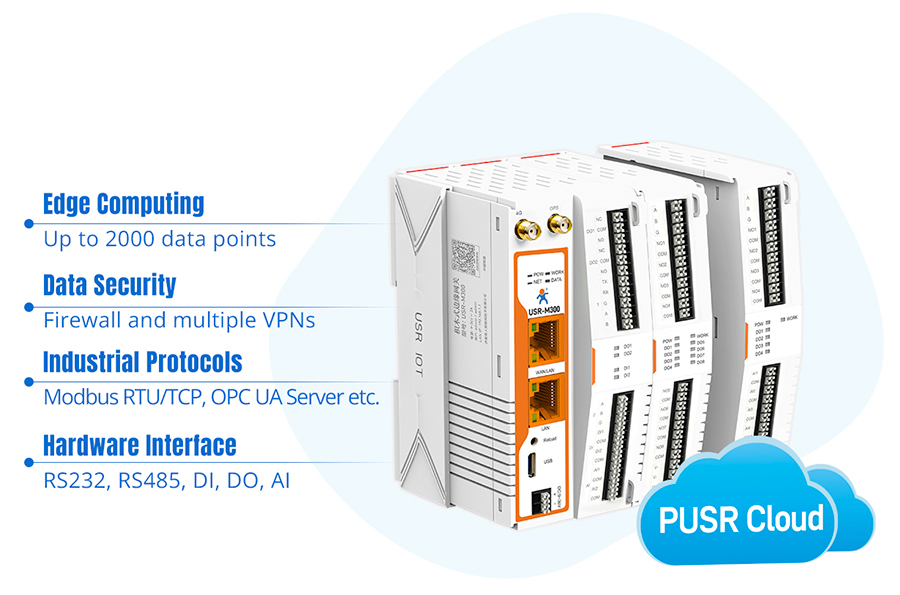In-depth Analysis of Configuring Modbus TCP Protocol for Industrial IoT Gateway
In the field of industrial automation, interconnection and data exchange between devices are crucial for achieving efficient production and intelligent management. As a widely used communication protocol in industrial control, the Modbus TCP protocol has become the preferred choice for communication among numerous industrial devices due to its openness, simplicity, and reliability. The industrial IoT gateway, serving as a bridge connecting different networks and devices, enables protocol conversion and data transmission between various protocols, with configuring the Modbus TCP protocol being one of its core functions. This article will delve into how to configure the Modbus TCP protocol for an industrial IoT gateway, helping readers better understand and apply this key technology.
Modbus TCP is an implementation version of the Modbus protocol over TCP/IP networks. Initially developed by Modicon (now a brand under Schneider Electric) in 1979 for communication between programmable logic controllers (PLCs), the Modbus protocol gradually expanded to TCP/IP networks with the development of industrial networks, forming the Modbus TCP protocol. It combines the simplicity and ease of use of the Modbus protocol with the broad compatibility of TCP/IP networks, enabling efficient communication among industrial devices from different manufacturers in an Ethernet environment.
The data frame structure of the Modbus TCP protocol differs from that of traditional Modbus RTU/ASCII. A complete Modbus TCP data frame consists of the following parts:
One of the primary functions of an industrial IoT gateway is to enable protocol conversion between different protocols. In industrial settings, there may be devices using various protocols, such as sensors using the Modbus RTU protocol and PLCs using the Profibus protocol. The industrial IoT gateway can convert these device protocols into the Modbus TCP protocol, allowing them to access Ethernet and communicate with host computers or other devices supporting the Modbus TCP protocol. For example, an industrial IoT gateway from the USR brand offers multiple protocol conversion functions, easily facilitating conversion between Modbus RTU and Modbus TCP for seamless interconnection among different devices.
The industrial IoT gateway can also aggregate and forward data from multiple devices. In a large-scale industrial production system, numerous industrial devices may be distributed, each generating a large amount of data. The industrial IoT gateway can collect this data, process and integrate it according to certain rules, and then forward it to a host computer or data center via the Modbus TCP protocol, enabling centralized monitoring and management of the production process.
The industrial IoT gateway can isolate different networks, enhancing the security of industrial networks. For instance, it can isolate the control network at an industrial site from the internal management network of an enterprise, preventing attacks and interference from external networks on the industrial control system. Additionally, the industrial IoT gateway can incorporate security features such as firewalls and access control to filter and monitor data passing through the gateway, ensuring the secure and stable operation of the industrial network.

When selecting an industrial IoT gateway and Modbus TCP devices, ensure good compatibility between them. Devices from different manufacturers may have differences in protocol implementation details, leading to communication issues. Before configuration, carefully read the device manuals to understand their support for the Modbus TCP protocol and any special requirements.
Data security is of utmost importance in industrial networks. When configuring an industrial IoT gateway, implement necessary security measures, such as setting strong passwords, enabling firewalls, and restricting access permissions, to prevent unauthorized access and data leakage. Additionally, regularly perform security updates and vulnerability fixes on the gateway to ensure the secure and stable operation of the industrial network.
To prevent the loss or corruption of configuration information, it is advisable to regularly back up the configuration information of the industrial IoT gateway. In case of need, you can quickly restore the configuration to minimize system downtime. Industrial IoT gateways from brands like USR typically offer convenient backup and recovery functions, allowing users to easily complete related operations through the management interface.
With the continuous development of Industry 4.0 and smart manufacturing, industrial IoT gateways and the Modbus TCP protocol will continue to evolve and upgrade. In the future, industrial IoT gateways will possess more powerful computing capabilities and intelligent functions, enabling more complex data processing and analysis. Meanwhile, the Modbus TCP protocol will deeply integrate with emerging technologies such as the Internet of Things, big data, and artificial intelligence, bringing more innovative applications and development opportunities to the field of industrial automation.
Configuring the Modbus TCP protocol on an industrial IoT gateway is a key link in achieving interconnection and intelligent management of industrial devices. By following the correct configuration steps and considerations, stable and reliable communication between the industrial IoT gateway and Modbus TCP devices can be ensured. In practical applications, users can select appropriate industrial IoT gateway products based on their needs, such as those from the USR brand, whose rich functions and good compatibility can meet the requirements of different industrial scenarios. With continuous technological advancements, industrial IoT gateways and the Modbus TCP protocol will play an increasingly important role in the field of industrial automation, driving industrial production towards intelligence and high efficiency.